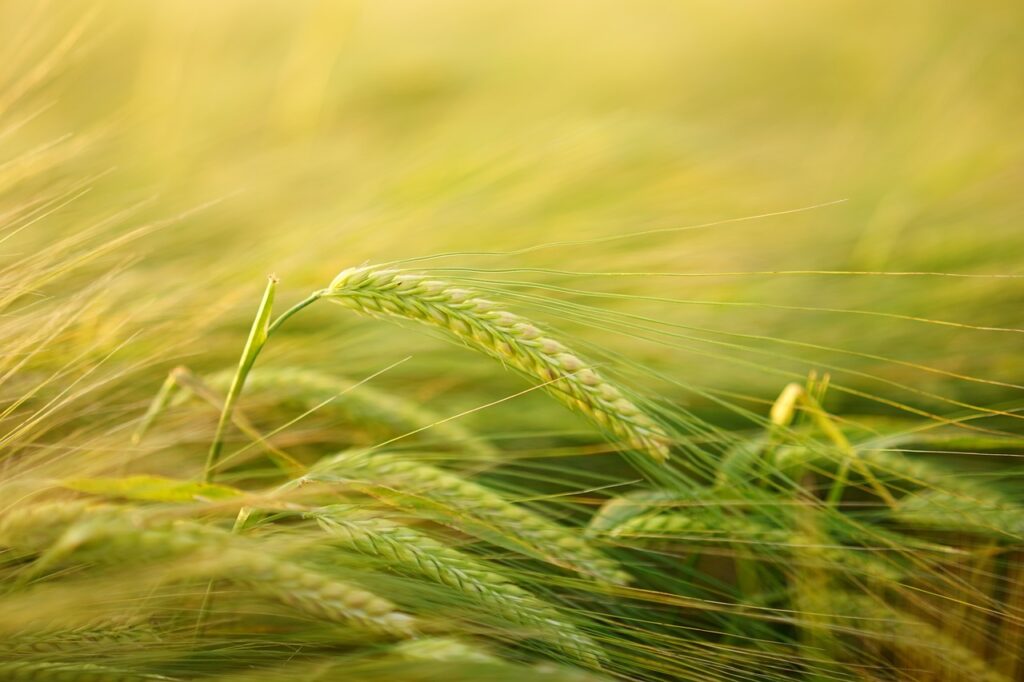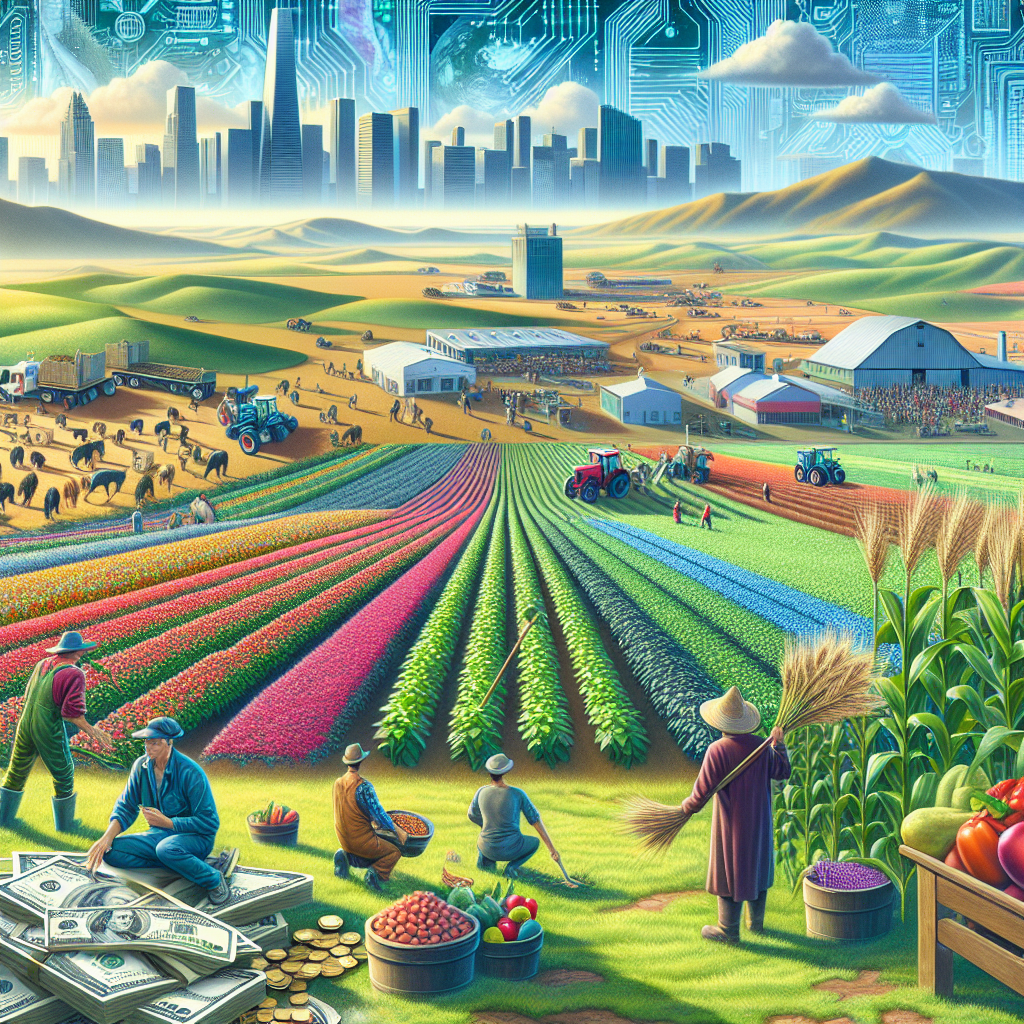If you’ve ever wondered about the most lucrative crops to cultivate, look no further. This article explores the realm of profitable agriculture and offers insight into the crops that can bring you substantial returns. Whether you’re an experienced farmer or simply have the desire to embark on an agricultural adventure, get ready to discover the most profitable crops to grow.
Overview
When it comes to the world of agriculture, choosing the right crop to grow can make all the difference in terms of profit. Factors such as market demand, input costs, and yield potential play a crucial role in determining which crops are the most profitable. In this article, we will explore a variety of crops that have shown promising profitability in recent years. From staple crops to specialty crops, high-value cash crops to organic crops, and alternative crops to niche crops, we will provide you with a comprehensive overview of the diverse options available to you as a farmer.
Factors influencing crop profitability
Before we dive into the specific crops, it is important to understand the key factors that influence crop profitability. Market demand is perhaps the most critical factor, as growing crops that have a high demand in the market ensures that you will have buyers for your produce. Input costs, including the cost of seeds, fertilizers, pesticides, and labor, also play a significant role. By minimizing input costs, farmers can maximize their profitability. Additionally, yield potential and market price fluctuations should be taken into consideration when selecting crops to grow. These factors will vary regionally, so it is crucial to assess the local market conditions and environmental suitability of a crop before making a decision.

Trends in profitable crops
As agricultural practices evolve, so do the trends in profitable crops. In recent years, there has been an increasing demand for specialty and high-value cash crops. Consumers are now willing to pay a premium for unique and high-quality produce, which has created opportunities for farmers to diversify their crop selection. Additionally, there has been a growing interest in organic farming, as more consumers seek out pesticide-free and sustainable options. With the rise of niche markets and the adoption of innovative farming techniques like aquaponics and hydroponics, there are now more possibilities than ever for farmers to cultivate profitable crops.
Staple Crops
Staple crops, such as wheat, rice, corn, and potatoes, are traditionally grown in large quantities and serve as the foundation of many diets around the world. While the profit margins for these crops may not be as high compared to specialty or high-value cash crops, their consistent demand and high yield potential make them a reliable choice for farmers. Wheat, for example, is the most widely cultivated crop globally and is used in various food products, making it a stable source of income for farmers.
Rice, another staple crop, is a lucrative option for farmers, especially in regions where it is a dietary staple. Similarly, corn is not only used for human consumption but also serves as feed for livestock, making it a versatile and profitable crop. Lastly, potatoes are a staple in many cuisines and have a relatively low production cost, making them a profitable choice for farmers.

Specialty Crops
Specialty crops refer to crops that have unique characteristics, flavors, or qualities that set them apart from traditional staple crops. These crops can command higher prices in the market due to their exclusivity and demand from consumers looking for a distinct culinary experience. Growing herbs and spices, such as basil, mint, and oregano, can be a profitable venture. These crops are used in a variety of dishes and have a dedicated consumer base, both in the culinary and medicinal markets.
Gourmet mushrooms, such as shiitake and oyster mushrooms, have gained popularity in recent years due to their unique taste and nutritional benefits. Truffles, known for their earthy and aromatic flavors, are highly sought after by chefs and can fetch high prices in the market. Saffron, derived from the Crocus sativus flower, is one of the most expensive spices in the world and has a strong demand in the culinary industry. Growing these specialty crops can be a rewarding endeavor for farmers willing to invest in the necessary infrastructure and expertise.
High-value Cash Crops
High-value cash crops, as the name suggests, offer the potential for significant profits. These crops often have a higher market value per unit compared to other crops, making the investment and effort worthwhile. With the legalization of cannabis in many regions, the cultivation of marijuana has become a lucrative business. However, it is essential to note that strict regulations and licensing requirements may be in place, depending on your jurisdiction.
Ginseng, a perennial herb known for its medicinal properties, has a high market value and can be cultivated in shaded environments. Hops, primarily used in beer production, have witnessed a surge in demand as craft breweries gain popularity. Lavender, valued for its fragrance and therapeutic qualities, is widely used in the cosmetics and aromatherapy industries. Cultivating these high-value cash crops requires specialized knowledge and dedication, but the potential profits can be significant.

Organic Crops
With the increasing demand for organic products, growing organic crops can provide a niche market for farmers seeking higher profitability. Organic vegetables, fruits, and herbs are produced without synthetic fertilizers and pesticides, making them more environmentally sustainable and appealing to health-conscious consumers. The market for organic produce continues to grow, and farmers can command higher prices for their organic crops.
Growing organic vegetables, such as lettuce, tomatoes, and cucumbers, allows farmers to tap into the growing market for pesticide-free fresh produce. Organic fruits, including apples, berries, and citrus fruits, are also in high demand among health-conscious consumers. Herbs like basil, rosemary, and thyme are commonly grown organically and are sought-after by both home cooks and professional chefs. By adopting organic farming practices, farmers can not only increase their profitability but also contribute to the sustainability of our agricultural systems.
Alternative Crops
In recent years, the cultivation of alternative crops has gained traction as farmers look for unique and profitable opportunities. Quinoa, a protein-rich grain, has seen a surge in popularity due to its nutritional value and versatility in cooking. Chia seeds, known for their high omega-3 fatty acid content, have become a sought-after superfood. Goji berries, rich in antioxidants, have gained popularity in the health food market. Moringa, a drought-resistant tree with various medicinal and nutritional properties, is also considered a profitable alternative crop.
While the demand for these alternative crops may vary, exploring new and unique crops can provide an opportunity for farmers to tap into niche markets and differentiate themselves from traditional agricultural practices.

Small-scale Farming Crops
For those looking to start small-scale farming operations, certain crops lend themselves well to this approach. Microgreens, which are young vegetable greens harvested just after the first leaves have sprouted, have gained popularity in recent years. These nutrient-dense greens are often used as garnishes or in salads and can be grown hydroponically or in small trays. Edible flowers, such as nasturtiums and pansies, offer a visually appealing addition to dishes and can be cultivated in small garden plots. Baby vegetables, harvested at an earlier stage than their fully mature counterparts, are increasingly sought after by restaurants and consumers looking for unique flavors and textures.
Niche Crops
Niche crops are those that cater to a specific market with specialized demands. Bamboo, for example, is not only used in construction but also has applications in furniture, textiles, and even food products. Cultivating bamboo can provide farmers with a sustainable source of income and contribute to environmental conservation efforts. Christmas trees, another niche crop, have a seasonal demand and can provide a profitable venture for farmers with suitable land. Peonies, valued for their vibrant colors and fragrance, are often used in floral arrangements and have a dedicated consumer base. Bonsai trees, prized for their artful cultivation and aesthetic appeal, are sought after by collectors and enthusiasts.

Aquaponics and Hydroponics
Aquaponics and hydroponics are innovative farming techniques that allow crops to be grown in water-based environments without soil. Lettuce, tomatoes, cucumbers, and herbs are some of the crops that thrive in these systems. The controlled environment of aquaponics and hydroponics ensures optimal growth conditions, maximizing yield potential. These farming methods also minimize water usage and allow for year-round cultivation, making them attractive options for farmers looking to increase profitability and efficiency.
Regional Profitable Crops
Different regions have their own agricultural strengths and unique crops that thrive in their specific climates. In California, avocados have proven to be a highly profitable crop due to the state’s Mediterranean climate. With its fertile volcanic soil, Hawaii has become synonymous with high-quality Kona coffee, which fetches premium prices. In Oregon, hazelnuts are a profitable crop due to ideal growing conditions and strong demand in the global market. Canada’s maple syrup industry is renowned, with maple syrup production concentrated primarily in the provinces of Quebec and Ontario. These regional profitable crops highlight the importance of understanding local conditions and market dynamics when selecting crops to grow.
In conclusion, profitability in crop cultivation depends on various factors, including market demand, input costs, and yield potential. From staple crops to specialty crops, high-value cash crops to organic crops, alternative crops to niche crops, and innovative farming techniques like aquaponics and hydroponics, there is a wide array of options available to farmers looking to maximize their profitability. Understanding market trends and local conditions, as well as considering factors such as consumer demand, environmental sustainability, and market value, will help farmers make informed decisions about which crops to grow to achieve financial success in the world of agriculture.
The article What Are The Most Profitable Crops To Grow? first appeared on https://www.66thlondon.org.
 Next Post
Next Post